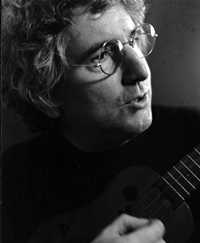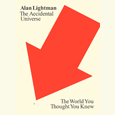Ori-Gotham-y
Kell Black’s new book is a make-your-own collection of New York icons, all entirely constructed of paper
A fold-and-glue tour of iconic Gotham architecture and scenes, Kell Black’s new book, Paper New York, is a tiny treasure trove, an architecture primer, and a sentimental postcard from The City, all wrapped up in one, slim, tasteful volume. Including simple instructions, twenty die-cut, pop-out models, and a smattering of smart, engaging information about the buildings that the book depicts—and its readers recreate—Paper New York is much more than just a crafty activity pack.
For the first time in history, more than half of all Americans live in cities, and—for better and worse—life in the twenty-first century is an urban phenomenon all over the globe. For Kell Black, a professor of art at Austin Peay State University in Clarksville and creator of another make-your-own book, Paper Chess, a city’s architecture and public spaces inform both the evolving geography of a place as well as its ever-changing psychology. Black presents New York as the ultimate city, a place where “over eight million people, speaking more than 150 distinct languages, interact in an area of just 305 square miles.”
Paper New York puts iconic buildings, sites, and vehicles in the reader’s hands—literally. In assembling and arranging the models, ex-New Yorkers will be struck by fits of sentimentality while tourists will re-live their first exhibit at the Guggenheim Museum or develop a sudden craving for a street-side hotdog. Most importantly, Black’s little Big Apple demonstrates the power of architecture and transit to circumscribe our inner emotional lives even as they define our external surroundings.
 In New York, structures serve as landmarks, describing the warp and weft of the steel, glass, and concrete that make up the fabric of the city’s waterfronts, neighborhoods, and thoroughfares. The vast East River was surely a landmark for early settlers to the area. Today, the man-made Brooklyn Bridge is a landmark that signifies the connection between Manhattan and Brooklyn as completely as the river once announced their separation. Black’s bridge is a study in minimalism that comes together using only seven pieces. Icons like a New York cab, the Statue of Liberty, and the Empire State Building have entered into American social and cultural consciousness in a way that transcends their practical functions: Travis Bickle drove a New York cab; the Statue of Liberty raises its torch for countless immigrants who continue to be the stuff America is made of; King Kong climbed—and fell from—the Empire State Building. Black’s versions carry the same resonances despite their pint-sized dimensions.
In New York, structures serve as landmarks, describing the warp and weft of the steel, glass, and concrete that make up the fabric of the city’s waterfronts, neighborhoods, and thoroughfares. The vast East River was surely a landmark for early settlers to the area. Today, the man-made Brooklyn Bridge is a landmark that signifies the connection between Manhattan and Brooklyn as completely as the river once announced their separation. Black’s bridge is a study in minimalism that comes together using only seven pieces. Icons like a New York cab, the Statue of Liberty, and the Empire State Building have entered into American social and cultural consciousness in a way that transcends their practical functions: Travis Bickle drove a New York cab; the Statue of Liberty raises its torch for countless immigrants who continue to be the stuff America is made of; King Kong climbed—and fell from—the Empire State Building. Black’s versions carry the same resonances despite their pint-sized dimensions.
While the book is primarily an earnest homage to the architecture of the city, Black wisely made room for models of a Central Park carriage, a hot dog cart, and the Rockefeller Center Ice Rink. “Many of the models are buildings,” writes Black, “but some experiences were best described in non-architectural terms. In all instances, the intention was not to design scale models, but rather to create paper sculptures that captured the essence of a building or a scene.” With a handful of household items—including such ubiquitous household ephemera as toothpicks and Elmer’s glue—neophytes can easily follow Black’s clear, concise instructions while serious model-makers will enjoy the way in which Black has broken these structures into their constituent parts without sacrificing important details.
 The Empire State Building—the book’s first model—is made up of just three rectangles that a reader could easily assemble without any instruction. However, Black also includes a pair of clever cut-outs that when glued together form the spire at the top of the building, and the long, middle section of the model is marked with a dark stripe that stands in for the iconic shadow that falls famously on the building’s inner tower. The marriage of elemental forms with Black’s eye for important details is what separates this book from fun activity books for kids. It’s easy to imagine a sentimental, former New Yorker keeping Black’s model of the Chrysler Building on an office window sill or his MTA subway car on a work desk next to an “I heart New York” coffee mug.
The Empire State Building—the book’s first model—is made up of just three rectangles that a reader could easily assemble without any instruction. However, Black also includes a pair of clever cut-outs that when glued together form the spire at the top of the building, and the long, middle section of the model is marked with a dark stripe that stands in for the iconic shadow that falls famously on the building’s inner tower. The marriage of elemental forms with Black’s eye for important details is what separates this book from fun activity books for kids. It’s easy to imagine a sentimental, former New Yorker keeping Black’s model of the Chrysler Building on an office window sill or his MTA subway car on a work desk next to an “I heart New York” coffee mug.
While there is plenty to enjoy here, the tiny model of St. Patrick’s Cathedral is especially endearing. The idea of reproducing the neo-Gothic majesty of the place in the form of a paper facsimile tiny enough to hold in your hand is too good to pass up, and Black’s delightful design delivers a full jolt of that pleasure particular to interacting with objects of diminished scale. Simple, printed black spaces denote the building’s doors and windows, but it’s the nifty design of the two octagonal towers and the details at the top of the model’s facade that really reveal this model as St. Patrick’s and not just any old castle-church-temple.
Paper New York is a lovingly rendered tribute to the Manhattan skyline as well as a fun activity for both a hands-on kid or a date-night in. The appeal of the book is not unlike the appeal of a city that promises something for everyone: Make me one with everything.


